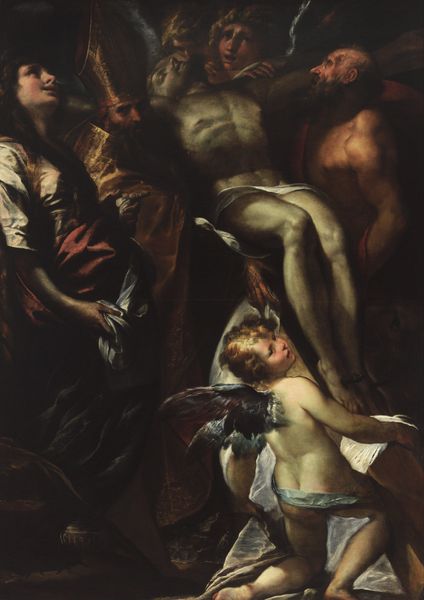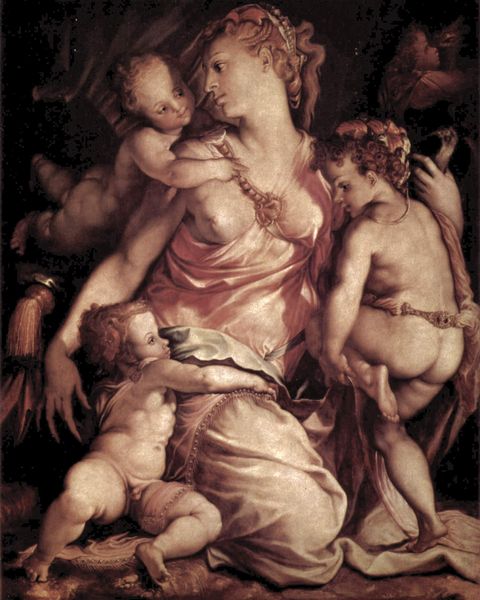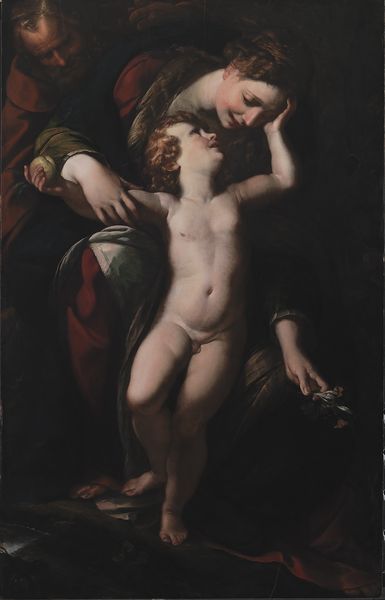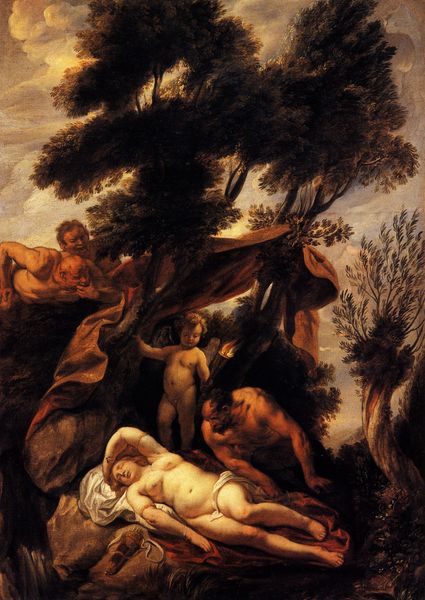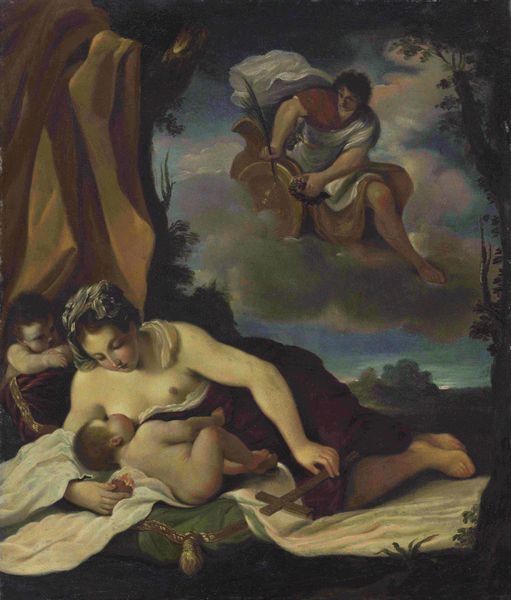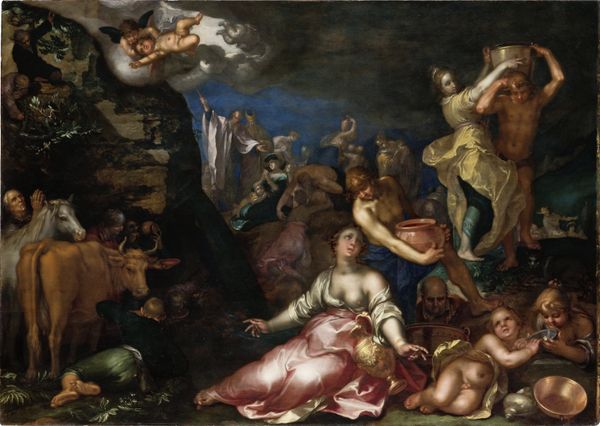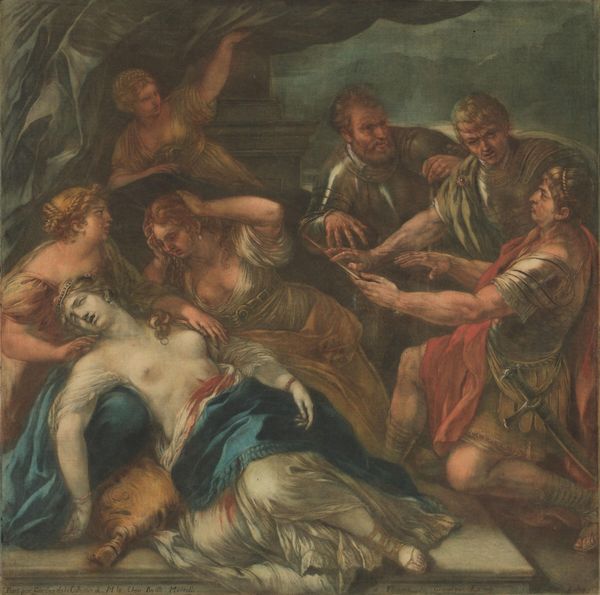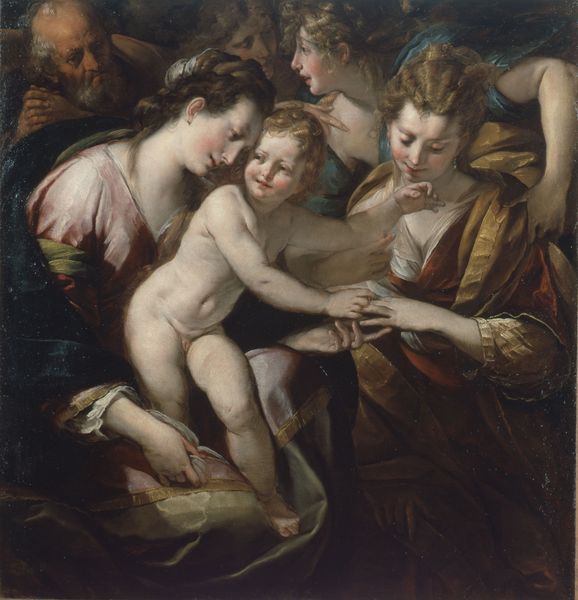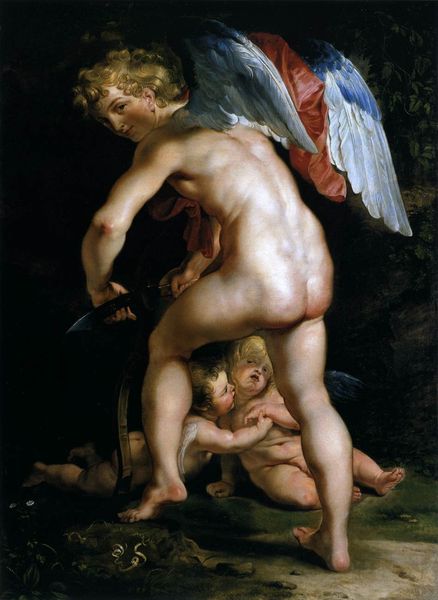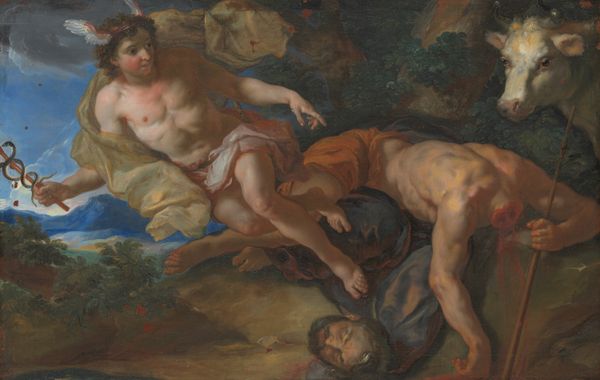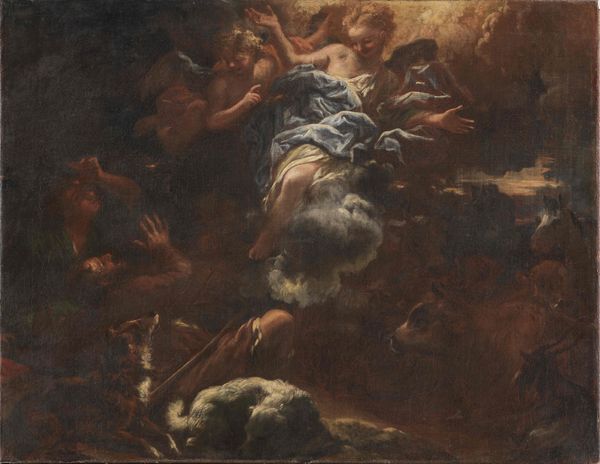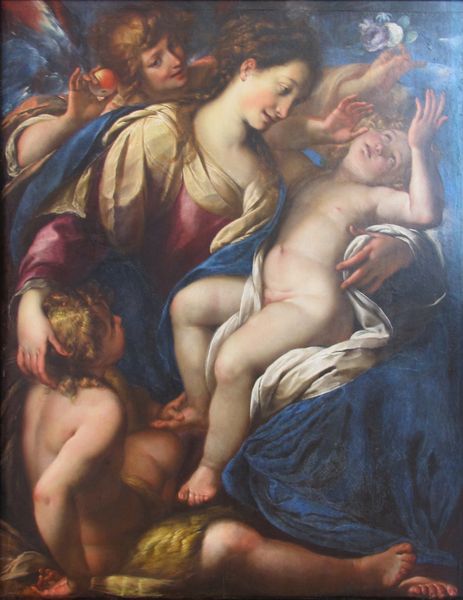
oil-paint
#
portrait
#
allegory
#
baroque
#
oil-paint
#
oil painting
#
portrait art
Dimensions: original canvas: 213.8 x 143.6 cm (84 3/16 x 56 1/2 in.) overall size (lined canvas and stretcher): 216 x 146 cm (85 1/16 x 57 1/2 in.) framed: 258.1 x 189.6 x 10.8 cm (101 5/8 x 74 5/8 x 4 1/4 in.) gross weight (painting and frame together): 65.772 kg (145 lb.)
Copyright: National Gallery of Art: CC0 1.0
Editor: Here we have Giulio Cesare Procaccini’s "The Ecstasy of the Magdalen," painted sometime between 1616 and 1620 using oil paint. The figures seem to reach upward, and the color palette feels both rich and a little somber. What draws your eye, and how do you interpret this work? Curator: The way the Magdalen's personal, spiritual experience intertwines with societal expectations and gendered narratives is what captures my attention. Her ecstasy isn't simply about divine love; it's about a woman's complex relationship with spirituality, particularly within the Baroque period's socio-political landscape. Editor: So, it’s more than just a religious depiction? Curator: Precisely. The portrayal of ecstasy, especially in female figures, was often fraught with cultural significance. The line between religious fervor and something deemed ‘hysterical’ or socially unacceptable was thin. The Magdalen, often depicted as a repentant sinner, becomes a vehicle to explore female subjectivity and societal control. Editor: I see. The angels and her upward gaze... they aren't just about holiness, but something more complicated. Curator: Consider the composition itself. The Magdalen is surrounded, almost constrained, by the figures of angels and putti. Is this support or a gilded cage? The use of light and shadow—characteristic of the Baroque—amplifies this tension, reflecting the inner turmoil she embodies, and more widely reflects society's understanding, and often, misunderstanding, of female agency. What is this representation saying about power structures at that time? Editor: This makes me rethink the visual storytelling in terms of power and vulnerability. Curator: Exactly. By engaging with these historical and social layers, we can read “The Ecstasy of the Magdalen” not just as a religious scene, but as a powerful commentary on women and their place in society. Editor: That really sheds new light on it for me! I appreciate this wider perspective on cultural significance.
Comments
No comments
Be the first to comment and join the conversation on the ultimate creative platform.
